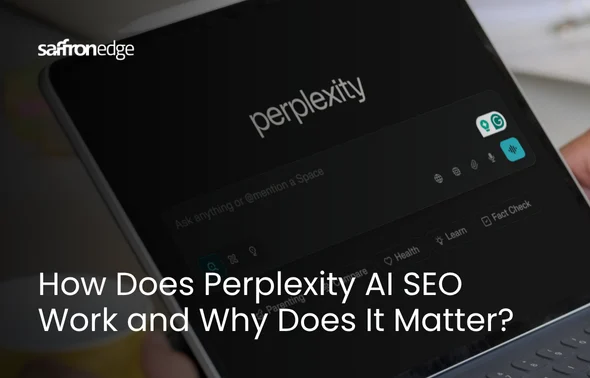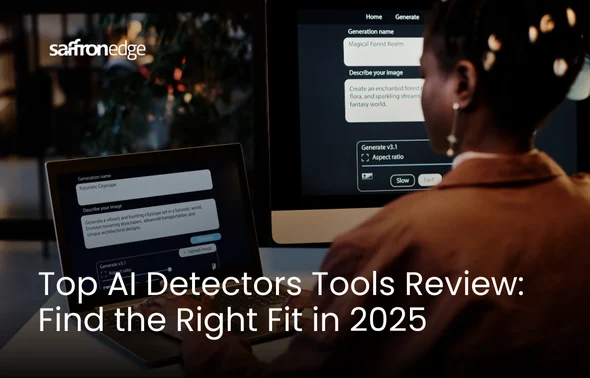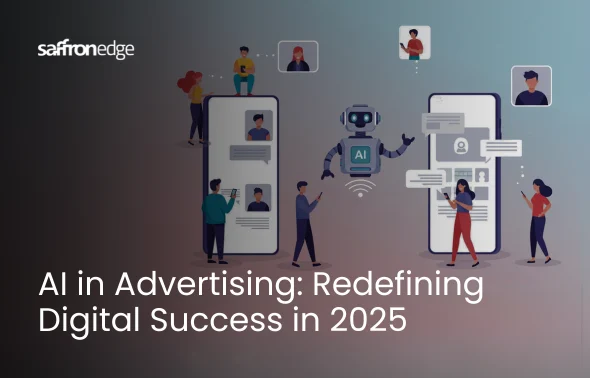Contents
- What is SEO for Perplexity AI?
- Why Indexing in Perplexity Matters for Your Digital Strategy?
- Why Perplexity Should be a Part of Your AEO & SEO Strategy?
- How to Use Perplexity AI for SEO?
- What Are the Pros & Cons Of Optimizing a Website for Perplexity AI?
- Want to Rank on AI Engines Like Perplexity AI?
- Key Features of Perplexity AI
- How to Rank in Perplexity Answers?
- How Perplexity Integrates with Traditional SEO Practices?
- How to Optimize Your Content for Perplexity AI?
- How Does Perplexity AI Choose What to Recommend?
- What are the Differences in Ranking on ChatGPT vs Perplexity vs Gemini?
- Conclusion
- Ready to Get Cited on Perplexity AI?
Perplexity AI has emerged as a game-changer in the rapidly evolving landscape of search. Unlike traditional search engines that deliver lists of links, Perplexity AI functions as an "answer engine," providing concise, conversational responses backed by real-time citations from credible sources.
This shift toward AI-driven search is reshaping how users discover information, with Perplexity boasting over 15 million monthly active users and a staggering 40% month-over-month growth rate.
Understanding Perplexity AI SEO isn't just an option for businesses and content creators. It's essential for maintaining visibility in a zero-click search world where answers are derived directly from your content.
Perplexity AI SEO, often intertwined with Generative Engine Optimization (GEO) and Answer Engine Optimization (AEO), focuses on optimizing content to be cited, referenced, and recommended in AI-generated responses.
While traditional SEO principles, like keyword optimization and backlinks, remain foundational, Perplexity prioritizes structured, authoritative, and intent-aligned content that AI models can easily read and trust.
In this guide, we'll explore the benefits of ranking in Perplexity AI, key implementation strategies, and practical steps to elevate your presence and how perplexity compares to other AI platforms like ChatGPT and Gemini.
Whether you're a marketer, SEO professional, or business owner, these insights will help you bridge the gap between traditional search and the AI era.
What is SEO for Perplexity AI?
SEO for Perplexity AI refers to the practice of optimizing your website, content, and online presence to appear in Perplexity's AI-powered answers.

Launched in 2022, Perplexity combines large language models (LLMs) with real-time web crawling via its Perplexity Bot.
It pulls from diverse sources, such as Bing APIs, Google rankings, and its index, to deliver cited, conversational results, unlike Google, which emphasizes page ranking.
Why Indexing in Perplexity Matters for Your Digital Strategy?
Perplexity focuses on domain authority, content freshness, and semantic relevance to construct direct answers.
Indexing in Perplexity matters because it is disrupting traditional search like other AI platforms: users increasingly opt for its mobile app and browser extension for quick, trustworthy insights, reducing reliance on SERPs.
A BrightEdge study shows Perplexity's results correlate 60% with Google's top organic listings but diverge in niches like e-commerce and fashion, creating unique opportunities.
Ignoring Perplexity AI SEO risks losing high-intent traffic; users here engage longer and convert better, with one agency reporting doubled newsletter signups from Perplexity referrals.
As AI search grows (it is projected to capture 25% of queries by 2026), integrating it into your strategy ensures diversified visibility beyond Google.
Why Perplexity Should be a Part of Your AEO & SEO Strategy?
Perplexity AI is a critical component of your Answer Engine Optimization (AEO) and Search Engine Optimization (SEO) strategy because it aligns with the shift toward AI-driven, zero-click search environments.
With Perplexity handling over 780 million monthly queries and growing 40% month-over-month, it captures high-intent users who seek quick, authoritative answers.
Including Perplexity in your strategy diversifies traffic sources, reducing reliance on traditional SERPs, where Google’s dominance is rising (AI search is projected to capture 25% of queries by 2026).
Perplexity’s focus on cited, conversational responses rewards brands that prioritize structured, trustworthy content, offering a competitive edge in niches like e-commerce and tech, where its results diverge from Google’s by up to 40%.
For example, a SaaS company optimizing for Perplexity saw a 30% increase in referral traffic from AI citations within three months.
By integrating Perplexity AI SEO, you future-proof your digital presence, enhance brand trust through citations, and tap into engaged audiences with higher conversion rates (up to 2x compared to organic search).
How to Use Perplexity AI for SEO?
Using Perplexity AI for SEO involves leveraging its features to inform and enhance your content strategy. Here’s a practical approach to maximize its impact:
-
Conduct Query Research with Perplexity: Use Perplexity’s “Related” suggestions and follow-up questions to identify conversational, long-tail queries your audience asks.
For example, searching “best CRM for small businesses” reveals related questions like “What features should a CRM have?”. Target these in your content.
-
Analyze Competitor Gaps: Test competitor keywords on Perplexity to spot missing citations or weak answers. Create content that fills these gaps with clear, cited responses, such as detailed guides or comparison tables, to outrank them in AI results.
-
Leverage Deep Research for Content Ideas: Use Perplexity’s Deep Research mode to generate insights from hundreds of sources in minutes.
For instance, researching “2025 SEO trends” can uncover unique statistics or perspectives to include in your content, improving authority. -
Optimize for Citations: Structure content to mirror Perplexity’s citation style. Use summaries, bullet points, and credible references.
Secure mentions on high-DA sites (e.g., Forbes, ZDNet) and encourage reviews on platforms like Yelp or G2 to increase recommendation chances by 30%. -
Track and Refine with Tools: Monitor Perplexity referrals using Otterly.AI or Semrush’s AIO reports.
Test your content by querying Perplexity directly and refining based on visibility gaps, ensuring continuous improvement.
By integrating Perplexity’s insights into your SEO workflow, you can create intent-aligned, AI-friendly content that encourages citations and traffic.
For example, a pet store using Perplexity’s query suggestions crafted a blog series on “pet care FAQs,” resulting in a 25% uptick in AI-driven referrals within two months.
What Are the Pros & Cons Of Optimizing a Website for Perplexity AI?
Optimizing for Perplexity strengthens visibility in AI-driven search while introducing challenges.
Understanding its advantages, such as greater trust and improved conversions, alongside limitations like regional restrictions, helps you refine Perplexity AI SEO strategies for maximum effectiveness.

| Aspect | Pros | Cons |
|---|---|---|
| Accuracy | It gives clear answers with trusted sources and is 78% more reliable than some AI tools. | If not focused, it can make mistakes or use biased sources; it is limited in some countries, like the EU. |
| Speed | Answers in seconds; Deep Research saves hours on big tasks. | Slows down during busy times; pages load more slowly than Google. |
| Ease of Use | Friendly chat-style interface; supports voice and images. | It can confuse new users with too many options; there is no video/audio analysis yet. |
| Cost | Free tier for basic use; Pro plan ($20/month) removes ads and adds features. | Pro plan has limits (e.g., 300 Deep Searches/day); could stop working if service has issues. |
| Innovation | New tools like Comet Browser make work smoother. | Faces legal issues over data use; less creative than some AI like ChatGPT. |
Overall, Perplexity excels for fact-based tasks but may require supplementation for creative or offline needs.
Want to Rank on AI Engines Like Perplexity AI?
We implement quick strategies to improve your SERP rankings and get noticed on answer engines like Perplexity AI with the expertise of Saffron Edge’s marketing professionals.
Key Features of Perplexity AI
Perplexity AI’s advanced features, such as Deep Research and multimodal search, empower SEO professionals to promote content visibility in 2025.
Processing 780 million monthly queries, these tools reveal valuable insights, target conversational queries, and amplify citations, establishing Perplexity as a vital platform for Perplexity AI SEO success.

Its core strength lies in combining LLMs with real-time web access, but standout features include:
-
Pro Search and Deep Research: Pro Search delivers in-depth answers with 3x more sources, while Deep Research autonomously conducts dozens of searches, reads hundreds of documents, and generates reports in 2-4 minutes, ideal for complex tasks like financial analysis.
-
Multi-Model Access: Pro subscribers choose from GPT-5, Claude 4.0 Sonnet, Gemini, and custom models like Sonar for tailored responses with dynamic depth modes balancing speed and reasoning.
-
Focus Modes and Multimodal Support: Narrow searches to academic, social, video, or web sources; upload files/images for analysis; and use voice dictation for hands-free queries.
-
Perplexity Assistant and Comet Browser: The 2025-launched Assistant handles tasks like email summaries; Comet, an AI browser, integrates search for on-the-fly research with 800+ app connections.
-
Collections and Spaces: Organize queries into shareable collections; collaborate in Spaces for team research, with real-time editing.
-
API Access: Connect Perplexity AI to your apps and workflows for automated queries, custom integrations, and seamless data retrieval.
These features make Perplexity a versatile professional tool, emphasizing transparency with citations.
How to Rank in Perplexity Answers?
To outrank competitors in Perplexity, blend traditional SEO with AI-specific tactics. Here's a comprehensive playbook:
1. Build a Strong SEO Foundation
Perplexity's crawler (PerplexityBot) mirrors Google and Bing, so core SEO is non-negotiable. Ensure technical excellence: fast loading (under 2 seconds), mobile optimization, and crawlable structure.
Use schema markup (e.g., FAQ, Article) to provide context AI craves. Maintain domain authority via backlinks from high-trust sites. Perplexity weighs this heavily in its PageRank-like index.
2. Create Intent-Aligned, Structured Content
Perplexity thrives on conversational queries, so optimize for questions like "What is the best way to [topic]?" Start with answer-first summaries (2-3 sentences), followed by bulleted lists, tables, and statistics.
Aim for 1,500–2,500 words per piece, incorporating visuals (infographics, branded images) as Perplexity favors multimedia. Refresh content quarterly to leverage its daily index updates; stale pages drop fast.
3. Leverage Authoritative Mentions and Lists
Secure spots in "best of" lists on sites like ZDNet or NerdWallet; Perplexity pulls 70% of recommendations from these.
Display awards, reviews, and testimonials prominently; user-generated content from Reddit or TripAdvisor increases citations by signaling trust. For e-commerce, encourage reviews to appear in comparison posts.
4. Optimize for Semantic and Entity-Based Search
Go beyond keywords: use natural language processing (NLP) tools to target long-tail phrases.
Build topical clusters with interlinked content. Perplexity's memory networks reward interconnected authority.
Include citations in your own content to mirror Perplexity's style, enhancing comprehension.
5. Monitor and Iterate with AI Tools
Track visibility using tools like Otterly.AI or Ahrefs' Brand Radar, which analyze mentions across Perplexity, ChatGPT, and Gemini.
Test queries manually and refine based on gaps, e.g., if competitors dominate "top SEO tools," create a superior list with unique data.
By addressing competitor gaps, like cross-platform validation (e.g., YouTube trends for timeliness), these strategies can increase citations by 50%+ within months.
How Perplexity Integrates with Traditional SEO Practices?
Perplexity doesn't replace traditional SEO; it enhances it. While Google focuses on comprehensive depth, Perplexity demands concise, extractable answers, creating a mutually beneficial relationship.
For instance, E-E-A-T principles elevate both authoritative backlinks and improve domain scores for Perplexity's reranker, while structured data aids Google's AI Overviews.Integration tips are:
-
Unified Content Calendar: Align topics for dual optimization, e.g., a blog on "SEO trends 2025" with Q&A sections for Perplexity and long-form analysis for Google.
-
Hybrid Keyword Research: Use Perplexity for semantic insights (e.g., follow-up questions) alongside Ahrefs for volume.
-
Performance Metrics: Track organic traffic alongside AI mentions; tools like Semrush's AIO benchmark across platforms.
This holistic approach mitigates risks from AI shifts, with studies showing 77% mention rates for top Google rankers in Perplexity.
How to Optimize Your Content for Perplexity AI?
Optimizing for Perplexity AI goes beyond keywords, focusing on AI-comprehension, intent-driven structures to highlight citations.

Since competitors often overlook multimedia and freshness, prioritize these gaps:
-
Structure for Extractability: Lead with concise summaries (2-3 sentences), then use H2/H3 headings, bullets, and tables for scannability. Answer questions directly, e.g., "The best cold brew storage method is..." to mimic featured snippets.
-
Target Conversational Queries: Research via Perplexity's "Related" suggestions for long-tail questions. Build FAQs from follow-ups, ensuring 1,500+ words with schema markup for Articles/FAQs.
-
Incorporate Multimedia and Freshness: Add unique images, infographics, and YouTube embeds. Perplexity favors visuals 70% more in recommendations. Update content quarterly with stats/dates to leverage daily indexing.
-
Build Topical Authority: Create interlinked clusters; secure mentions in "best of" lists on high-DA sites. Use reviews from Yelp/Google for local SEO signals.
-
Monitor and Iterate: Test queries manually; track citations with tools like Ahrefs. Plain language (low perplexity score) enhances understanding.
These tactics can increase visibility by 50% in months, complementing traditional SEO.
How Does Perplexity AI Choose What to Recommend?
Perplexity AI prioritizes "authoritative list mentions" in recommendations because they provide clear, ranked options. It pulls 70% of product/service suggestions from sources such as ZDNet or NerdWallet.
How Perplexity Chooses Recommendations:
-
Real-Time Search and Ranking: Uses Google/Bing APIs plus its crawler (PerplexityBot) to fetch fresh data, then applies a reranker favoring E-E-A-T, domain authority, and semantic relevance.
-
Source Prioritization: Focuses on top-tier outlets (journals, news) via modes like Academic; citations ensure transparency, with Deep Research deriving from hundreds of sources.
-
List and Review Signals: Ranks based on explicit lists (e.g., "top 10 CRMs") and aggregated reviews from Google/Yelp; awards/affiliations boost scores.
-
Contextual Relevance: LLMs like Claude 4.0 interpret intent, refining via follow-ups for personalized recs.
Aim for lists on DA 70+ sites and encourage reviews to get featured. Perplexity's algorithm rewards direct, trustworthy signals over fluff.
What are the Differences in Ranking on ChatGPT vs Perplexity vs Gemini?
Each AI has its own way of choosing answers, making Generative Engine Optimization (GEO) a must for 2025. Do you want your content to get picked by AI tools like ChatGPT, Perplexity, or Gemini?
Unlike Google’s focus on page rankings, GEO is about being a trusted source for AI answers. Perplexity loves fresh, structured content with reviews, ChatGPT favors conversational depth, and Gemini leans on Google’s SEO with visuals.
With AI handling 25% of searches, knowing these differences can increase your visibility by 40%. Here’s a quick breakdown to help you rank higher.
| Ranking Factor | Perplexity | ChatGPT (OpenAI) | Gemini |
|---|---|---|---|
| Content Quality | Clear, direct answers with citations from trusted websites. | Conversational story-like answers with unique insights. | High E-E-A-T (expertise, trust) with verifiable facts. |
| Natural Language (NLP) | Medium focus: Structure matters more than fancy words. | High focus: Using natural, engaging phrases like you’re conversing. | High focus: Match queries like Google SEO. |
| Backlinks & Authority | High: Prioritizes high domain authority and “best of” lists. | Medium: Pulls from Bing and directories like Wikipedia. | Medium: Uses Google’s ranking signals. |
| Reviews & Trust Signals | High: Prioritizes Yelp/Google reviews for trust. | Medium: Values G2 or Trustpilot mentions. | High: Boosts Google Business Profile ratings. |
| Freshness | High: Updates daily, so refresh content often. | Low: Relies on older data unless browsing is enabled. | Medium: Pulls from Google’s real-time index. |
| Multimedia (Images/Video) | Medium: Loves infographics and embeds (70% more citations). | Low: Mostly text-focused, less visual pull. | High: Videos/images boost rankings by 40%. |
| Unique Edge | Uses real-time trends and community signals like Reddit. | Avoids errors by favoring safe, quotable sources. | Integrates Google’s AI Overviews with strict fact-checking. |
Understanding these differences helps you craft content that wins on all three platforms. Test your content by searching “best [your niche]” on ChatGPT, Perplexity, and Gemini to spot gaps.
For ChatGPT, write 1,500+ word conversational FAQs and aim for Wikipedia mentions. For Perplexity, update content every three months and secure “best of” spots on sites like Forbes, reviews on Yelp, or G2 can lift citations by 30%.
For Gemini, add videos and optimize for Google SEO with clear citations. Track mentions weekly with Ahrefs or Otterly.AI.
A pet store mixing these tactics saw 40% more AI mentions in six months. Pair these with your Perplexity AI SEO strategies to rule AI search in 2025.
Conclusion
Perplexity represents the future of search: conversational, cited, and user-centric. You can secure a competitive edge by leveraging its benefits, implementing targeted strategies, and filling content gaps like advanced reranking and UGC integration.
Begin with an audit of your current content, test queries on Perplexity, and commit to ongoing optimization. In a world where AI answers dominate, those who adapt will thrive. Embrace these strategies to thrive in the AI-driven search landscape.
Ready to Get Cited on Perplexity AI?
Perplexity AI is shaping how customers find answers, ensure your brand is the one they discover. Experts at Saffron Edge help you craft content and strategies that get your business featured where it matters most.
Rank in AI Overviews
Frequently Asked Questions
What is SEO for Perplexity AI, and how does it differ from traditional SEO?
SEO for Perplexity AI is optimizing content to be cited in Perplexity's AI-generated answers, emphasizing structured, authoritative responses over keyword-stuffed pages. Unlike traditional SEO, which targets link lists on Google, Perplexity AI SEO focuses on semantic intent and real-time freshness, using its PerplexityBot crawler to prioritize domain trust and conversational relevance.
What are the main benefits of ranking higher in Perplexity AI for businesses?
Ranking higher in Perplexity AI can enhance brand trust through citations, increase conversion rates from engaged users (up to 2x), and diversify traffic that future-proofs against AI dominance. It also drives cost-effective visibility in zero-click searches, with one study showing 67% better referral engagement compared to Google.
How to use Perplexity AI strategies to improve my content's visibility?
To improve visibility with Perplexity AI strategies, create intent-aligned content with summaries, lists, and schema markup; secure authoritative mentions; and refresh pages regularly. Tools like structured data and topical clusters help AI parse your site, filling gaps in competitor approaches by emphasizing entity-based optimization.
What role does user-generated content play in Perplexity AI rankings?
User-generated content plays a key role in Perplexity AI rankings by signaling trust through reviews and mentions on sites like Reddit, which Perplexity values alongside authoritative sources. Encouraging testimonials boosts citations, addressing a gap in traditional SEO by enhancing semantic relevance and engagement signals..
How do I track and measure success in Perplexity AI efforts?
To track success in Perplexity AI, use tools like Otterly.AI or Ahrefs Brand Radar to monitor citations and mentions across queries. Analyze engagement metrics like time-on-site from referrals and iterate based on manual testing, ensuring your strategies outperform competitors in AI visibility.
Related Blogs
We explore and publish the latest & most underrated content before it becomes a trend.

Subscribe to Saffron Edge Newsletter!

Rank in AI Overviews








